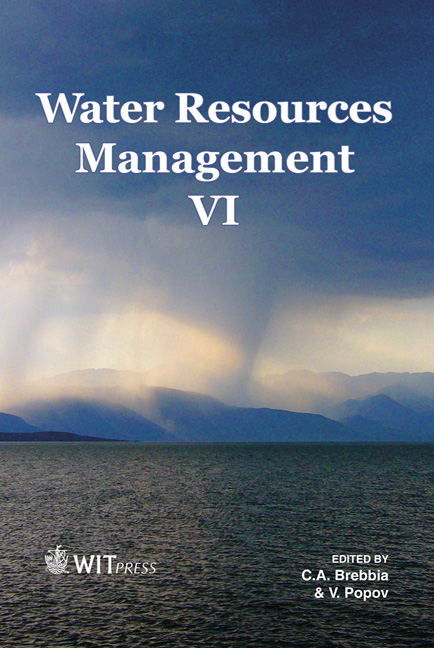Effect Of Irrigation Amount And Frequency On Phenology, Vine Length And Biomass Partitioning Of Wild Cucumber (Cucumis Myriocarpus) And Wild Watermelon (Cucumis Africanus)
Price
Free (open access)
Transaction
Volume
145
Pages
7
Page Range
557 - 563
Published
2011
Size
681 kb
Paper DOI
10.2495/WRM110491
Copyright
WIT Press
Author(s)
R. J. Nkgapele, M. S. Mphosi & P. W. Mashela
Abstract
This study was conducted to determine the most suitable irrigation frequency and quantity for the greenhouse-grown indigenous leafy vegetable, Cucumis myriocarpus, and herbage crop, Cucumis africanus. Four irrigation intervals were tested, 2, 3, 4 and 5 days, arranged in a randomised complete block design. Total irrigation quantities, plant water consumption, rate of progress towards flowering and vine length varied amongst the irrigation frequency treatments, whereas biomass partitioning to botanical fractions differed only in the roots of C. myriocarpus. The highest yields were obtained from treatments employing the middle (3 and 4 days intervals) frequencies and quantities of irrigation. Results of the study suggest that proper management strategies of irrigation amount and frequency can improve the quality and quantity of C. myriocarpus and C. africanus for sustainable rural smallholder crop production system augmentation in the Limpopo Province of South Africa. Keywords: classical growth, biomass yield, root/shoot ratio, water use efficiency, vine length, leaf parameters. 1 Introduction Wild cucumber (Cucumis myriocarpus) and wild watermelon (C. africanus) are important indigenous food and medicinal plants in semi-arid areas of Southern
Keywords
classical growth, biomass yield, root/shoot ratio, water use efficiency, vine length, leaf parameters





